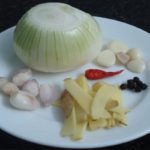Cold drying is an optimal food preservation method alongside heat drying. Although it is more expensive, the quality of products preserved through cold drying is significantly higher than that of heat-dried goods. Today, let’s explore what cold drying is and how it works.
1 What is Cold Drying?
Cold drying, or freeze-drying, is a process conducted under atmospheric pressure. It is considered a method that minimizes the impact of external factors on product quality by using dry air to dry food with a moisture content of 10-30% and a lower temperature than conventional drying, ranging from 35-60°C.
 Cold dryer
Cold dryer
Also known as a heat pump dryer, the cold dryer typically consists of a heat pump placed inside a drying chamber or cabinet, depending on the equipment’s scale.
The heat pump has one hot end that provides heat for food drying and one cold end responsible for dehumidifying the drying air.
2 Principle of Cold Food Drying
Cold drying is a continuous and closed-loop process. Humid air from the drying chamber is drawn through the cold condenser coil. Here, the cold dryer cools the air to the condensation temperature, separating water vapor from the air and creating a dry, cold air stream.
 Principle of cold food drying
Principle of cold food drying
Next, the machine directs this dry, cold air stream through a heating chamber, where it is heated to a temperature of approximately 35-60°C. Afterward, to initiate the cold drying process as desired by the manufacturer, the dry, cold air is guided into the drying chamber containing the food to be dried.
Consequently, after drying, this dry, cold air stream becomes warm and humid and is circulated through the trays of the food being dried to continue the cyclic drying process, similar to the procedure described above.
3 Differentiating Cold and Heat Drying
To distinguish between cold and heat drying, consider the following characteristics:
Principle
 Cold drying uses dry air with low humidity
Cold drying uses dry air with low humidity
Cold drying employs dry air with low humidity to dehydrate food. In contrast, heat drying utilizes heat, and as the temperature rises, water evaporates more rapidly, resulting in faster food drying.
Structure
 Heat dryer has a simpler and more compact structure
Heat dryer has a simpler and more compact structure
Cold dryers have a complex and bulky structure, including a water condensation system, a cooling system, an auxiliary heating unit, and a fan, depending on their scale.
On the other hand, heat dryers consist of an electronic control system that generates heat and uses a convection fan, resulting in a simpler and more compact design.
Drying Temperature
 Heat drying operates at temperatures between 40-100°C or higher
Heat drying operates at temperatures between 40-100°C or higher
Cold drying is performed within a temperature range of 35-60°C. Conversely, heat drying occurs at temperatures between 40-100°C or higher, depending on the type of food being dried.
Characteristics of Dried Products
 Cold drying optimally preserves food’s color, shape, and nutrients
Cold drying optimally preserves food’s color, shape, and nutrients
Cold drying effectively maintains the color, shape, and nutritional value of food.
While heat drying also preserves these aspects, it cannot match the superior quality retention of cold drying.
Types of Dried Foods
 Common products are typically heat-dried
Common products are typically heat-dried
Cold drying is often reserved for premium products, while common goods are usually heat-dried.
Cost
 Cold drying is 2-3 times more expensive than heat drying
Cold drying is 2-3 times more expensive than heat drying
Due to the exceptional results it yields, cold drying is 2-3 times more expensive than heat drying.
Hopefully, this article has clarified the differences between cold and heat drying. If you prioritize superior preservation for your products, cold drying is the way to go!
See also:
More Useful Advice for Homemakers (Part 2)
Have you heard of the surprisingly easy tips to make cooking and household chores simpler? White radish eliminates the acrid taste of salted meat, adding alum to raw shrimp helps soften it, and adding cold water when frying eggs can make them crispy – these are just a few of the tricks to make your life easier.
Is Refrigerated Leftovers Linked to an Increased Risk of Cancer?
Dr. Lam Van Man, Head of Research, Development and Technology Transfer Department of the Institute of Safety Food, has warned of the risk of food poisoning when reheating leftovers from the refrigerator. But what should we be aware of when it comes to the possibility of these leftovers causing cancer? Here, we explore what the experts have to say on the matter and offer some tips for safe eating.



































